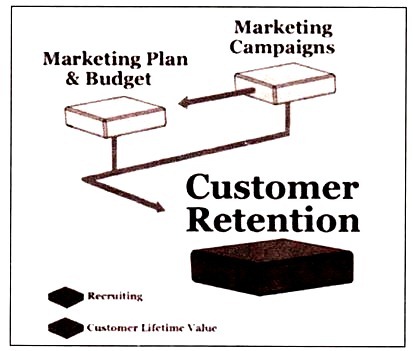After reading this article you will learn about the steps to be followed before and after customer retention.
Steps to be Followed before Customer
Retention:
You can work on your customer retention strategy at any time, and marketing campaigns may be an important part of your strategy. You may also decide to increase your focus on retention when you’re writing your annual marketing plan. But if you’re losing customers, don’t hesitate to focus your energy on retention right now.
1. Determine your retention strategy:
Your value proposition and brand strategy should drive your retention plan. For example, if your value proposition is customer intimacy, your customers are counting on great service. If they’re buying on price, you’ll usually focus more on automating service to minimize costs.
2. Build your team:
ADVERTISEMENTS:
In some industries, the original sales rep is the best person to manage an existing client — for example, the account may require ongoing selling. In other cases it’s better to transition the customer to an account rep who focuses on day-to-day management. Once you’ve decided how to structure the team, determine how many people you’ll need and start recruiting.
3. Pay commission for renewals and growing the business:
Your current customers are your most valuable asset; if your sales reps don’t earn commission on renewals, they’ll be incented to spend their time chasing new business instead.
Market to existing customers:
Put as much effort into your current customer campaigns as you do the rest of your marketing programs. Know your audience, grab their attention, focus on the offer, measure your results. Use campaigns to
ADVERTISEMENTS:
(a) Nurture your customer relationships
(b) Encourage them to buy again
(c) Expand your relationships by cross-selling, up-selling and asking for referrals
(d) Identify customers who are at risk of defecting
ADVERTISEMENTS:
(e) Continually deliver on your value proposition and brand promise
4. Measure purchase intent and loyalty, not “satisfaction”:
Customer feedback can help you improve your products and continue your relationship. However, it’s not effective to measure “customer satisfaction” because it’s so vague. “Satisfied” doesn’t mean they intend to keep buying. Instead, focus on behavior: Ask whether they intend to buy again and why or why not. Ask what three things you can improve and whether they’ll provide referrals. These questions provide more actionable insight than “satisfaction.” Treat a survey as a marketing campaign. Give your customers a reason to respond, thank them and share the results.
5. Use data to evaluate large groups of customers:
If you don’t have personal relationships with your customers, use data to identify customers who haven’t purchased in the normal timeframe. They may be at risk of defecting and you can launch retention campaigns and encourage them to stay.
Steps to be Followed after Customer Retention:
Refine and improve your customer retention strategy and execution — they may deliver the highest ROI of all your marketing programs.
ADVERTISEMENTS:
Turning customer acquisition into customer loyalty:
Deciding customer retention strategy:
Company use the various retention strategy to turn the customer acquisition into customer loyalty. Customer Retention is the activity that a selling organization undertakes in order to reduce customer defections. Successful customer retention starts with the first contact an organisation has with a customer and continues throughout the entire lifetime of a relationship.
A company’s ability to attract and retain new customers, is not only related to its product or services, but strongly related to the way it services its existing customers and the reputation it creates within and across the marketplace. Customer retention is more than giving the customer what they expect, it’s about exceeding their expectations so that they become loyal advocates for your brand.
ADVERTISEMENTS:
Creating customer loyalty puts ‘customer value rather than maximizing profits and shareholder value at the center of business strategy. The key differentiator in a competitive environment is more often than not the delivery of a consistently high standard of customer service.
Customer retention has a direct impact on profitability. Research by John Fleming and Jim Asplund indicates that engaged customers generate 1.7 times more revenue than normal customers, while having engaged employees and engaged customers returns a revenue gain of 3.4 times the norm.
